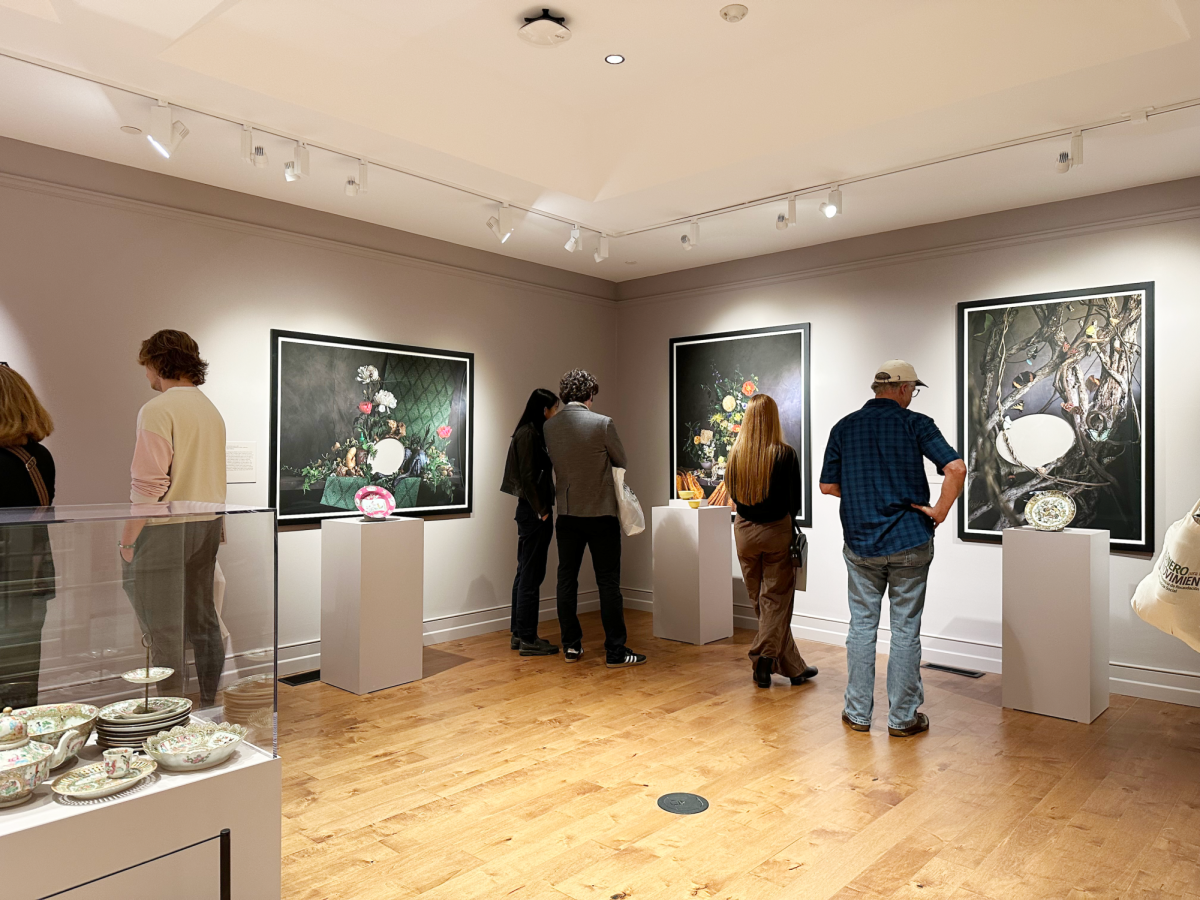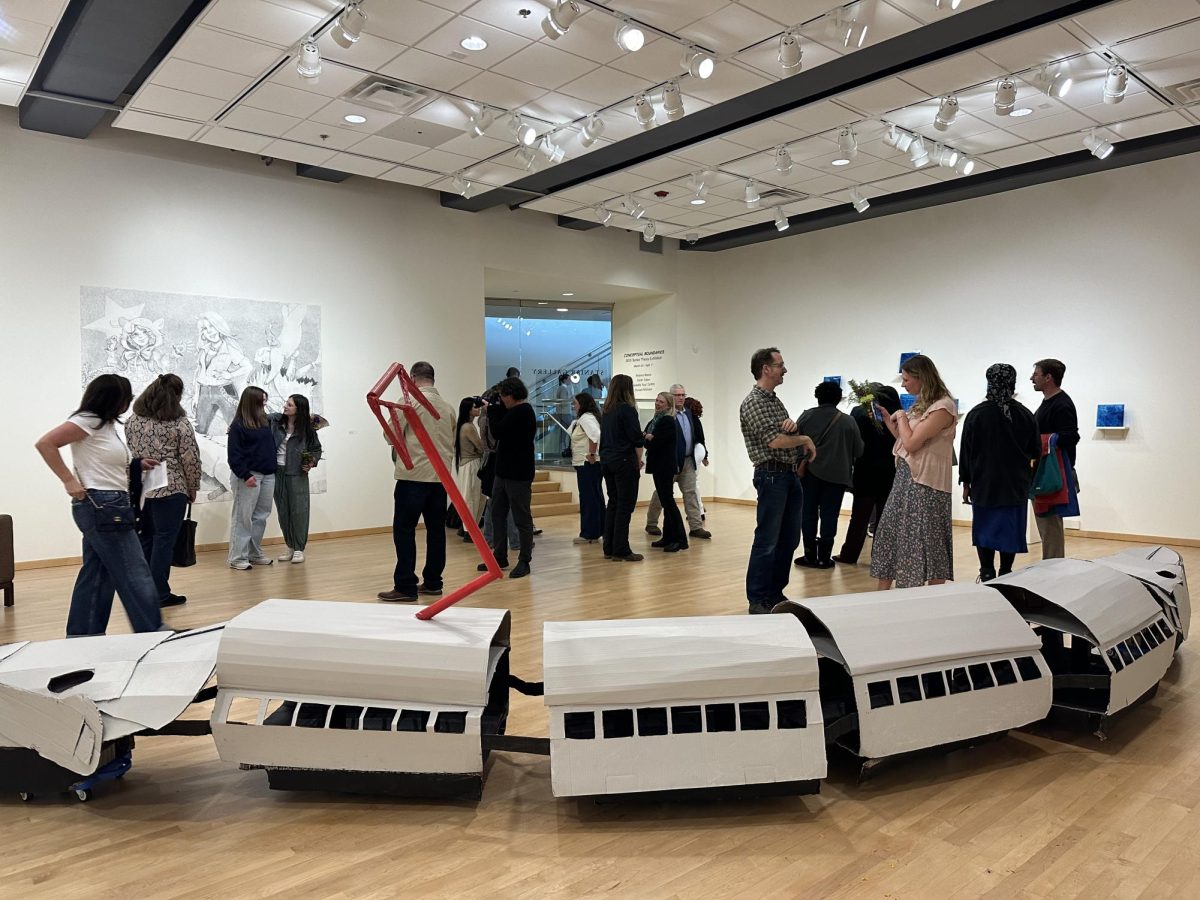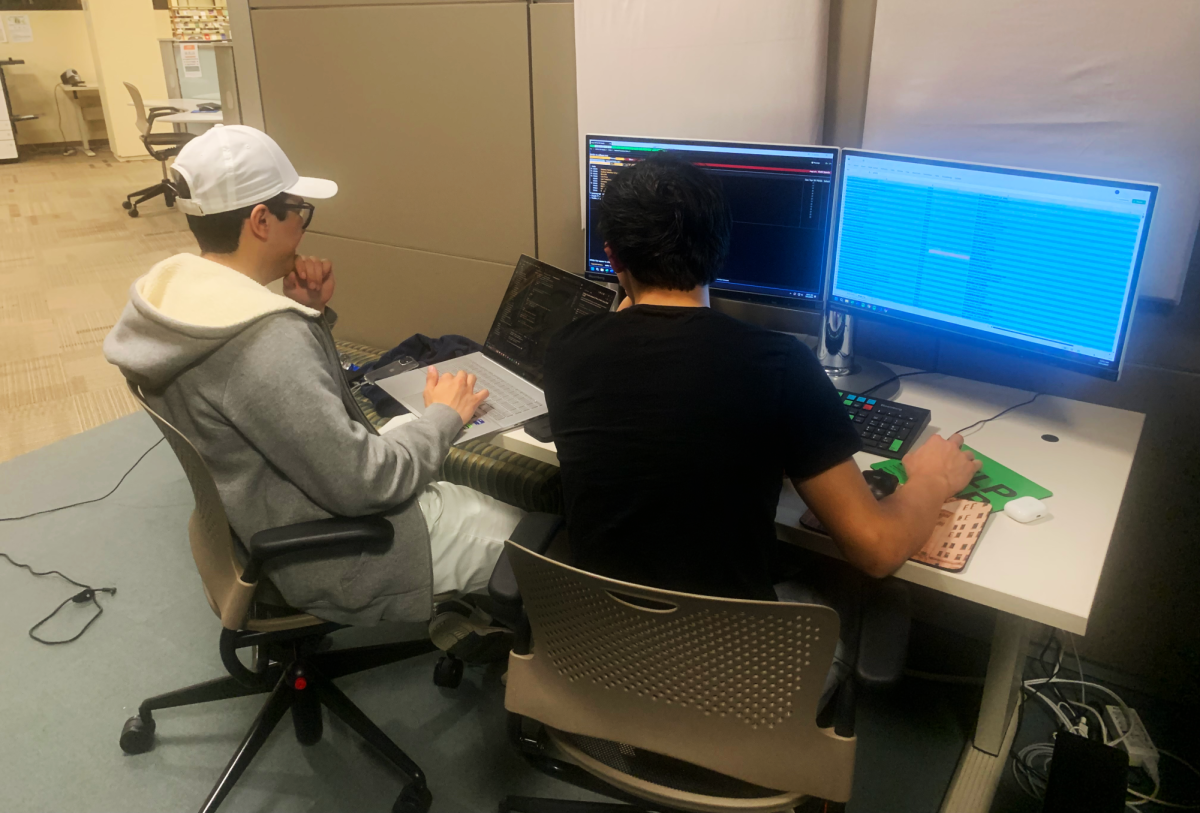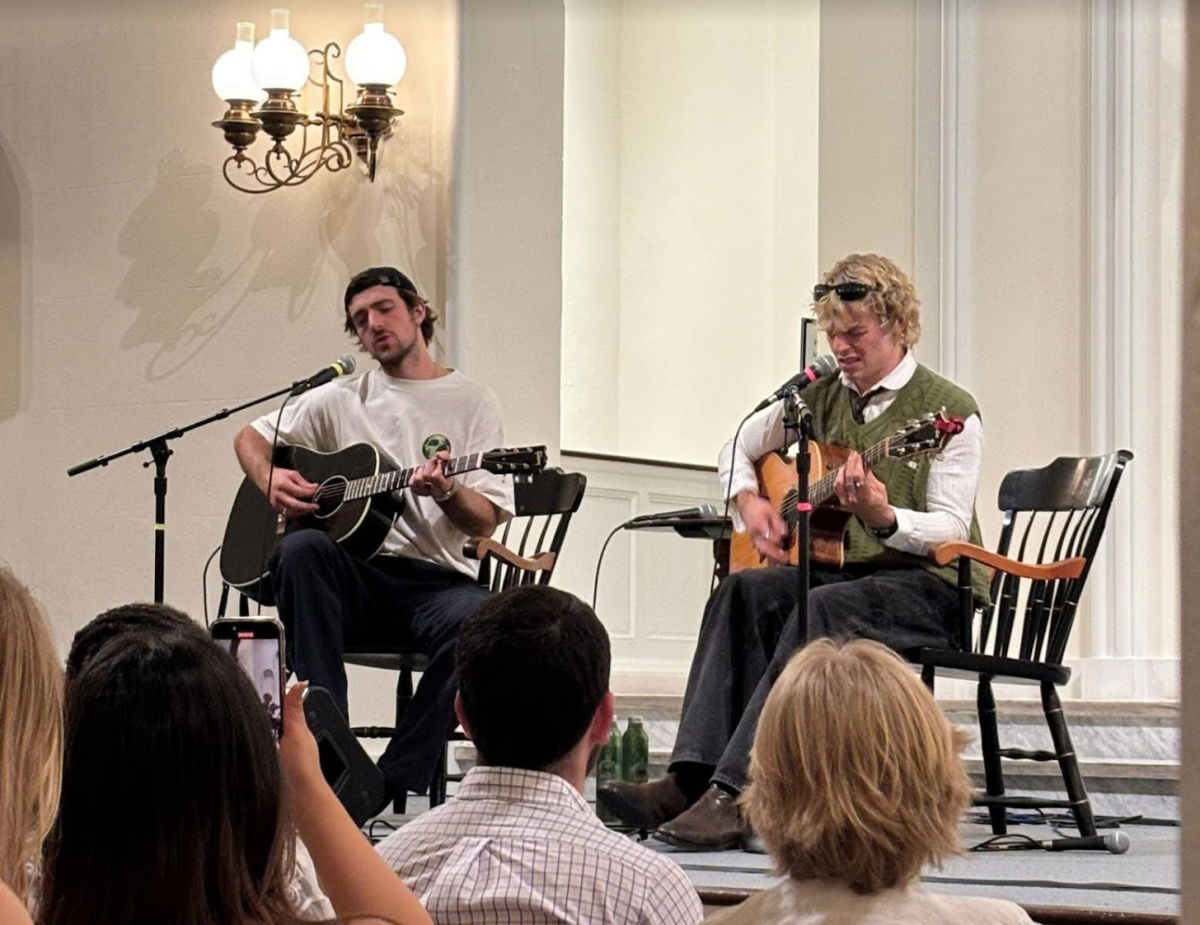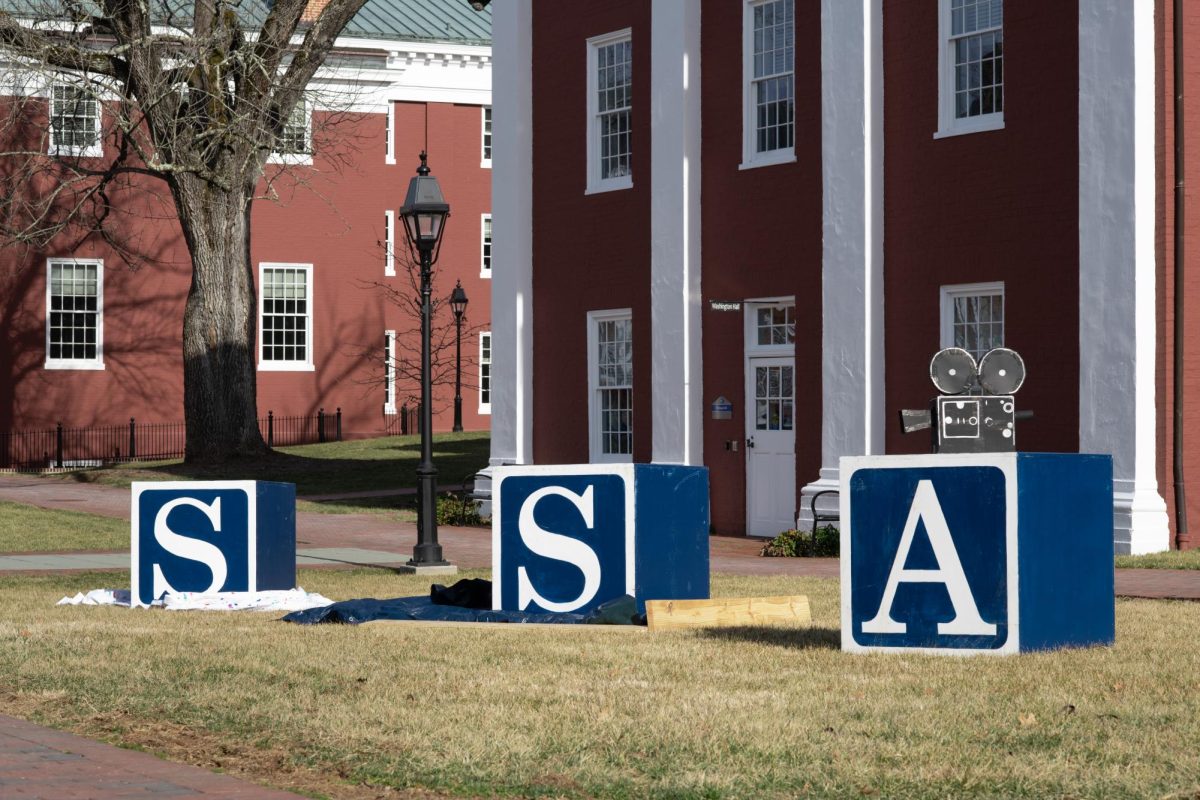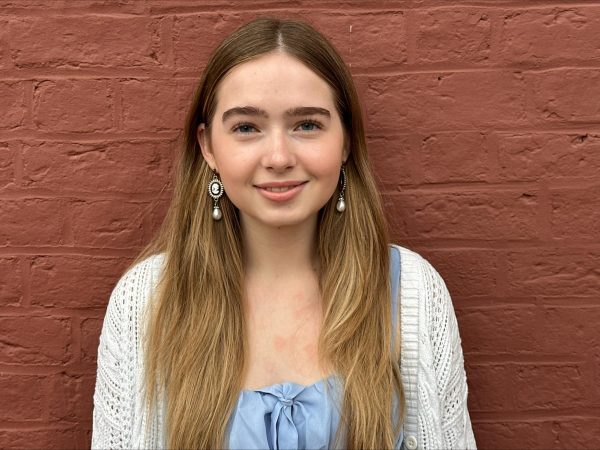A new art exhibit, “Long Time No See,” brings a fresh perspective to the Reeves Museum of Ceramics. The museum showcases collections of Chinese and Japanese export ceramics.
Photographs from “Long Time No See” feature silhouettes of Chinese porcelain surrounded by symbolic scenes that explore the Asian diaspora in western society. In front of each photograph sits the ceramic display, seemingly “removed” from its original context. It recontextualizes Chinese export porcelain back to its original heritage and stories, artist Stephanie Shih said.
The work puts a twist on traditional still-life photography and recenters the Reeves Museum’s collection of Chinese porcelain while exploring complexities of the Chinese American experience, particularly the immigrant experience, she said.
Shih created “Long Time No See” during her time as the university’s first inaugural artist-in-residence last year. The program allows artists to create new work inspired by the museum’s collection.
Shih held an artist talk and reception on Sept. 26, giving students and members of the Lexington Community the opportunity to learn about the historical context surrounding her work, and better understand her inspiration and artistic process. Art Museums and Galleries Director Isra El-Beshir said Shih’s work “brings this set of fresh perspectives that deepens the relevancy of our collections today.”
Shih said she researched the history behind individual pieces in the Reeves Museum’s collection materials and used it to assemble still-life scenes containing historical relevance and symbolism.
The Reeves Collection of Ceramics was donated to the university by Euchlin Reeves and Louise Herreshoff in 1967, according to W&L Museums. This collection includes a large amount of export Chinese porcelain that was made with the intent to be sold to European and American consumers.
These ceramics lost their cultural context when they were viewed as luxury items without the respect to the tradition surrounding the art of Chinese ceramic making, Shih said. With her work, Shih rectified this abandonment of cultural importance.
She described this process as her way of “welcoming back very old friends.”
Shih also spoke of her personal inspiration behind “Long Time No See.”
“As an artist, I’ve always been drawn to the detritus around us as we move through the world. How things, food, objects, trash that we touch and use and discard contribute to carry meaning and define us,” she said.
Shih drew upon her experience as a linguist and cognitive scientist when cultivating her artistic process, she said.
“People often write off still-life as pretty little flower pictures,” Shih said. “But actually what they are are a really powerful insidious ways of subliminal messaging — of getting across concepts into someone’s mind without being too obvious about it.”
Shih compares this process to language, explaining that the components of her art are derived from Chinese linguist patterns and their English translations.
With her exhibit, Shih invites the viewer to play an active role in recontextualizing the ceramics in the Reeves collection within their original heritage. By placing the ceramics outside of the photographs, Shih invites the viewer to mentally return these pieces into their historical and cultural context.
“You are playing an active role in the reimplementation of these objects,” Shih said.
“Long Time No See” will be open to the public until June 7, 2025, providing people the opportunity to experience her work first hand.



